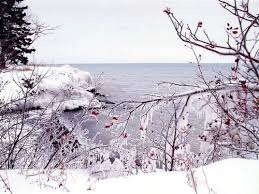Free Winter Wallpaper Backgrounds Biography
The Philippines is a sovereign country in Southeast Asia in the western Pacific Ocean. To its north across the Luzon Strait lies Taiwan. West across the South China Sea sits Vietnam. The Sulu Sea to the southwest lies between the country and the island of Borneo, and to the south the Celebes Sea separates it from other islands of Indonesia. It is bounded on the east by the Philippine Sea. Its location on the Pacific Ring of Fire and its tropical climate make the Philippines prone to earthquakes and typhoons but have also endowed the country with natural resources and made it one of the richest areas of biodiversity in the world. An archipelago comprising 7,107 islands, the Philippines is categorized broadly into three main geographical divisions: Luzon, Visayas, and Mindanao. Its capital city is Manila.
With a population of more than 92 million people[6], the Philippines is the 7th most populated Asian country and the 12th most populated country in the world. An additional 12.5 million Filipinos live overseas.[10] Multiple ethnicities and cultures are found throughout the islands. In prehistoric times, Negritos were some of the archipelago's earliest inhabitants. They were followed by successive waves of Austronesian peoples who brought with them influences from Malay, Hindu, and Islamic societies. Trade introduced Chinese cultural influences which remain to this day.
The arrival of Ferdinand Magellan in 1521 marked the beginning of an era of Spanish interest and eventual colonization. In 1543, Spanish explorer Ruy López de Villalobos named the archipelago Las Islas Filipinas in honor of Philip II of Spain. Miguel López de Legazpi arrived in the Philippines in 1565 and consolidated Spanish rule in the islands, which remained a colony of Spain for more than 300 years.
Manila became the Asian hub of the Manila–Acapulco galleon fleet. As the 19th century gave way to the 20th, there followed in quick succession the Philippine Revolution, which spawned the short-lived First Philippine Republic; the Spanish-American War; and the Philippine–American War. In the aftermath, the United States emerged as the dominant power; aside from the period of Japanese occupation, the United States retained sovereignty over the islands until the end of World War II when the Philippines gained independence. The United States bequeathed to the Philippines the English language and a stronger affinity for Western culture. Since independence the Philippines has had an often tumultuous experience with democracy, with popular "people power" movements overthrowing a dictatorship in one instance but also underlining the institutional weaknesses of its constitutional republic in others.
The name Philippines is derived from that of King Philip II of Spain. Spanish explorer Ruy López de Villalobos during his expedition in 1542 named the islands of Leyte and Samar Felipinas after the then Prince of Asturias. Eventually the name Las Islas Filipinas would be used to cover all the islands of the archipelago. Before it became commonplace, other names such as Islas del Poniente (Islands of the West) and Magellan's name for the islands San Lázaro were also used by the Spanish to refer to the islands.








The Philippines is a sovereign country in Southeast Asia in the western Pacific Ocean. To its north across the Luzon Strait lies Taiwan. West across the South China Sea sits Vietnam. The Sulu Sea to the southwest lies between the country and the island of Borneo, and to the south the Celebes Sea separates it from other islands of Indonesia. It is bounded on the east by the Philippine Sea. Its location on the Pacific Ring of Fire and its tropical climate make the Philippines prone to earthquakes and typhoons but have also endowed the country with natural resources and made it one of the richest areas of biodiversity in the world. An archipelago comprising 7,107 islands, the Philippines is categorized broadly into three main geographical divisions: Luzon, Visayas, and Mindanao. Its capital city is Manila.
With a population of more than 92 million people[6], the Philippines is the 7th most populated Asian country and the 12th most populated country in the world. An additional 12.5 million Filipinos live overseas.[10] Multiple ethnicities and cultures are found throughout the islands. In prehistoric times, Negritos were some of the archipelago's earliest inhabitants. They were followed by successive waves of Austronesian peoples who brought with them influences from Malay, Hindu, and Islamic societies. Trade introduced Chinese cultural influences which remain to this day.
The arrival of Ferdinand Magellan in 1521 marked the beginning of an era of Spanish interest and eventual colonization. In 1543, Spanish explorer Ruy López de Villalobos named the archipelago Las Islas Filipinas in honor of Philip II of Spain. Miguel López de Legazpi arrived in the Philippines in 1565 and consolidated Spanish rule in the islands, which remained a colony of Spain for more than 300 years.
Manila became the Asian hub of the Manila–Acapulco galleon fleet. As the 19th century gave way to the 20th, there followed in quick succession the Philippine Revolution, which spawned the short-lived First Philippine Republic; the Spanish-American War; and the Philippine–American War. In the aftermath, the United States emerged as the dominant power; aside from the period of Japanese occupation, the United States retained sovereignty over the islands until the end of World War II when the Philippines gained independence. The United States bequeathed to the Philippines the English language and a stronger affinity for Western culture. Since independence the Philippines has had an often tumultuous experience with democracy, with popular "people power" movements overthrowing a dictatorship in one instance but also underlining the institutional weaknesses of its constitutional republic in others.
The name Philippines is derived from that of King Philip II of Spain. Spanish explorer Ruy López de Villalobos during his expedition in 1542 named the islands of Leyte and Samar Felipinas after the then Prince of Asturias. Eventually the name Las Islas Filipinas would be used to cover all the islands of the archipelago. Before it became commonplace, other names such as Islas del Poniente (Islands of the West) and Magellan's name for the islands San Lázaro were also used by the Spanish to refer to the islands.
Free Winter Wallpaper Backgrounds

Free Winter Wallpaper Backgrounds

Free Winter Wallpaper Backgrounds
Free Winter Wallpaper Backgrounds
Free Winter Wallpaper Backgrounds
Free Winter Wallpaper Backgrounds
Free Winter Wallpaper Backgrounds

Free Winter Wallpaper Backgrounds

Free Winter Wallpaper Backgrounds
Christmas Snow Blue - Free Video Backgrounds - Ignitemotion.Com
Windows Xp Tip - Free Wallpaper Changer
No comments:
Post a Comment